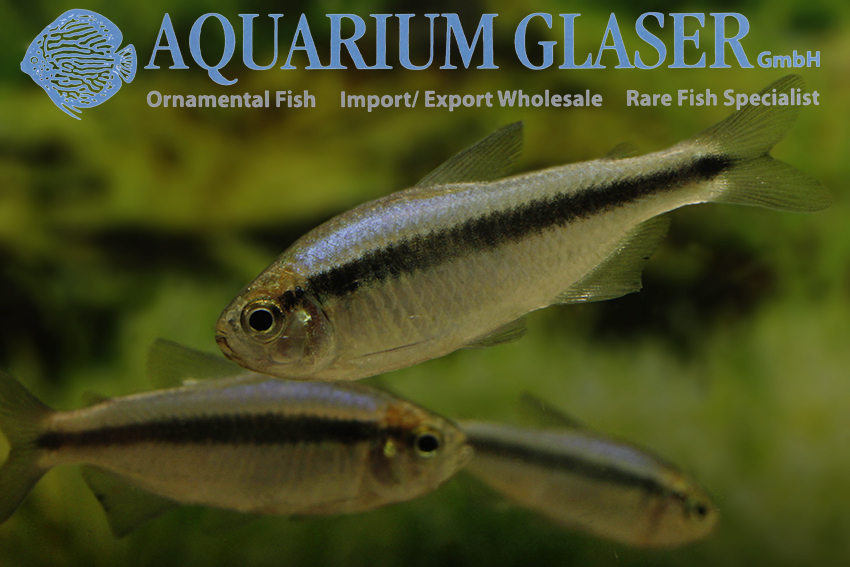I recently bought Imperial Lapis tetras at a quality local store. It's one of those flowery names popular in the Chinese aquarium trade (think "Celestial Pearl danios"), and such names are becoming common as the English speaking hobby loses ground to the growth of the hobby in China. We have a tendency in North America to fear Latin, but now we're translating Mandarin. But whether Mandarin or English, I'm not getting good info on this new to the hobby tetra.
It's a lovely creature, and I hope everyone here who keeps tetras gets to see this odd little beauty. But the hits I get on google are all sales pitches. Its real identity is vague. Is it Hyphessobrycom melanostichos? H. cyanotaenia? H nigricinctus?
There's a cluster of similar, newly introduced tetras that could be sold under the imperial lapis brand name, and to find out which I have, I have to ignore standard google and go to the scientific pdfs. When these small, tank bred tetras have grown, in a few weeks, I now have the documentation and means to identify them. When I look up the English/Mandarin name, I get interchangeable photos of 2 different species.
I think we have a responsibility as hobbyists to share info. I hope to have enough success with these fish to be able to write an article, maybe here, so that future searches won't just get sales pitches, but concrete, shared info on how to keep the fish. If someone beats me to that, post it. Share it. My last scientific course was Grade 10 biology, and I'm not putting on airs here. I'm not a scientist. Others have done the work to find and describe these creatures, and if they become popular, there will be a hobbyist need for info. For now, Latin offers it.
It's ironic that in our little hobbyist world, all these foolish "Imperial this and that" pop names reflect why science chose to use Latin, the language of a dead empire. It was done when the conflicts were the British, Dutch, French and Spanish empires, and is just as valid with the Mandarin and English speaking empires duking it out. Latin names are apolitical and neutral, in a language no one speaks anymore. But if you want grounded info on a fish, it gets you what you want.
Just pretend melanostichos is an English word, like moustache, melanin or sticky. It's easy. It gets results.
It's a lovely creature, and I hope everyone here who keeps tetras gets to see this odd little beauty. But the hits I get on google are all sales pitches. Its real identity is vague. Is it Hyphessobrycom melanostichos? H. cyanotaenia? H nigricinctus?
There's a cluster of similar, newly introduced tetras that could be sold under the imperial lapis brand name, and to find out which I have, I have to ignore standard google and go to the scientific pdfs. When these small, tank bred tetras have grown, in a few weeks, I now have the documentation and means to identify them. When I look up the English/Mandarin name, I get interchangeable photos of 2 different species.
I think we have a responsibility as hobbyists to share info. I hope to have enough success with these fish to be able to write an article, maybe here, so that future searches won't just get sales pitches, but concrete, shared info on how to keep the fish. If someone beats me to that, post it. Share it. My last scientific course was Grade 10 biology, and I'm not putting on airs here. I'm not a scientist. Others have done the work to find and describe these creatures, and if they become popular, there will be a hobbyist need for info. For now, Latin offers it.
It's ironic that in our little hobbyist world, all these foolish "Imperial this and that" pop names reflect why science chose to use Latin, the language of a dead empire. It was done when the conflicts were the British, Dutch, French and Spanish empires, and is just as valid with the Mandarin and English speaking empires duking it out. Latin names are apolitical and neutral, in a language no one speaks anymore. But if you want grounded info on a fish, it gets you what you want.
Just pretend melanostichos is an English word, like moustache, melanin or sticky. It's easy. It gets results.


